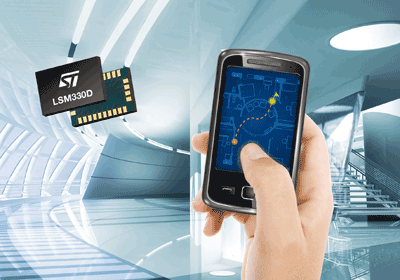Technologies Driving ‘Designs of the Future’
BY MURRAY SLOVICK
The accompanying essay on the opposite page talks about Mouser’s efforts to provide “Solutions for Designs of the Future.” So as the writer tasked with developing what amounts to an op-ed page commentary, it seemed logical to me to carry this theme further by discussing what these future designs might encompass. Or, put another way, to look at technologies that are sure-fire bets to become more important to design engineers going forward. Here are three that, I believe, will make a difference.
3D chips and 3D packaging
As process nodes continue to shrink, continued scaling has become increasingly difficult because, among other things, standard planar chips leak a lot of power. As a result, chipmakers are turning to 3D for both individual transistors and microchip IC packaging. On the transistor side, companies (notably Intel) have already begun using 3D FinFETs to replace planar transistors. According to Intel, its 22-nm Ivy Bridge FinFET chips will be 37% faster at low voltage and draw less than half the power of the company’s 32-nm chips. FinFET is based around a very small pillar, or fin, of silicon that rises above the surface of the chip.
In 3D packaging, multiple chips with different functionality can be stacked into a single module using through-silicon vias (TSVs) running, as the name implies, through the body of the chips. These short copper “pillars” electrically connect one chip to another with diameters that range from 1 to 30 µm. VLSI Research expects that by 2016 TSV-connected chips will account for almost $12 billion in revenues (still only about 5 percent of the sub-45-nm silicon expected to be shipped in 2016). In addition, this architecture dramatically lowers the package footprint, reduces power consumption and reduces propagation delay resulting in increased system speed.
Because of the relatively high cost of adding TSVs — estimated at double the normal packaging costs — usage will be focused on high-performance chips such as FPGAs, CPUs, GPUs, and application processors.
MEMS
With the dramatic explosion of microelectromechanical system (MEMS) devices occurring in mobile phones, tablets, gaming consoles, automotive applications and other areas, the market for MEMS is growing spectacularly. According to iSupply, MEMS revenue will grow from $7.9B in 2011 to over $12.5B in 2016.
A range of MEMS devices are now available, from pressure sensors, RF-MEMS, accelerometers, and gyroscopes to microphones, microactuators, compasses, chemical sensors, mirrors, and displays. The effort to integrate microsensors, microactuators, and standard microelectronics onto a single chip will be one of the most hotly pursued breakthroughs of the near future.

STMicroelectronics LSM330DLC linear sensor modules are system-in-package devices featuring a 3D digital accelerometer and a 3D digital gyroscope.
Multicore in embedded systems
Chip manufacturers developed faster single-core processors to meet ever-increasing performance requirements, but soon they realized that increasing frequency had severe drawbacks in power consumption and increased thermal energy. So now suppliers have recognized that the way forward is to build processors that run at lower frequency and voltages, but include parallel cores on a single chip.
The overall performance increases because multicores can perform more than one task at given point of time. Today most of the gaming consoles are multicore and so are smartphones. As an example, consider ARM’s recent introduction of its big.LITTLE approach which connects the performance of the ARM Cortex-A15 MPCore processor with the energy efficiency of the Cortex-A7 processor, and enables the same application software to be seamlessly switched between them. The performance capabilities of the Cortex-A15 processor can be used for heavy workloads, while the Cortex-A7 can take over to most efficiently process the majority of always-on workloads such as user interfaces in applications such as smartphones. ■
Advertisement
Learn more about Mouser Electronics





